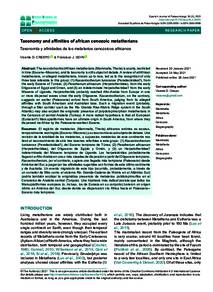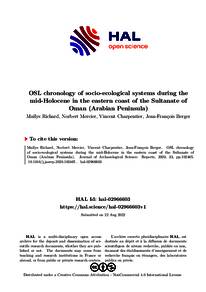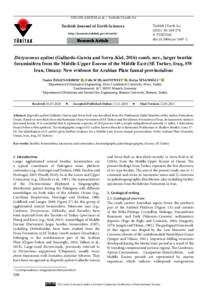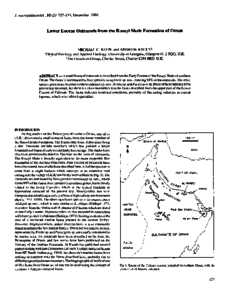Document
Taxonomy and affinities of African cenozoic metatherians.
Identifier
DOI: 10.7203/sjp.36.2.20974
Source
Spanish Journal of Palaeontology. v. 36, 2, p. 133-148
Contributors
Goin, Francisco J. , Author
Other titles
Taxonomía y afinidades de los metaterios cenozoicos africanos
Country
Spain
City
Madrid
Publisher
Sociedad Espanola de Paleontologia.
Gregorian
2021-01-01
Language
English
English abstract
The record of extinct African metatherians (Mammalia, Theria) is scanty, restricted in time (Eocene–Miocene), and its taxonomy is still subject of debate. A review of all African metatherians, or alleged metatherians, known up to now, led us to the recognition of only three taxa referable to this group: (1) Kasserinotherium tunisiense (Peradectoidea?), from the early Eocene of Tunisia; (2) Peratherium africanum (Herpetotheriidae), from the early Oligocene of Egypt and Oman, and (3) an indeterminate Herpetotheriidae? from the early Miocene of Uganda. Herpetotheriids probably reached Afro-Arabia from Europe in one or more dispersal waves since the early Oligocene. Kasserinotherium, on the contrary, suggests an earlier (Paleocene) arrival from South America, judging from its alleged affinities with South American and Australian taxa. Such a migration event (probably, through a filter corridor such as the Rio Grande Rise-Walvis Ridge system in the South Atlantic) may also explain the enigmatic presence of polydolopimorphian metatherians in the Cenozoic of central Anatolia (Turkey). A more radical hypothesis is that all European (Eurasian?) Marsupialiformes have an ultimate origin in South America, from where they dispersed via Africa by the Paleocene–earliest Eocene.
ISSN
2255-0550
Category
Journal articles





